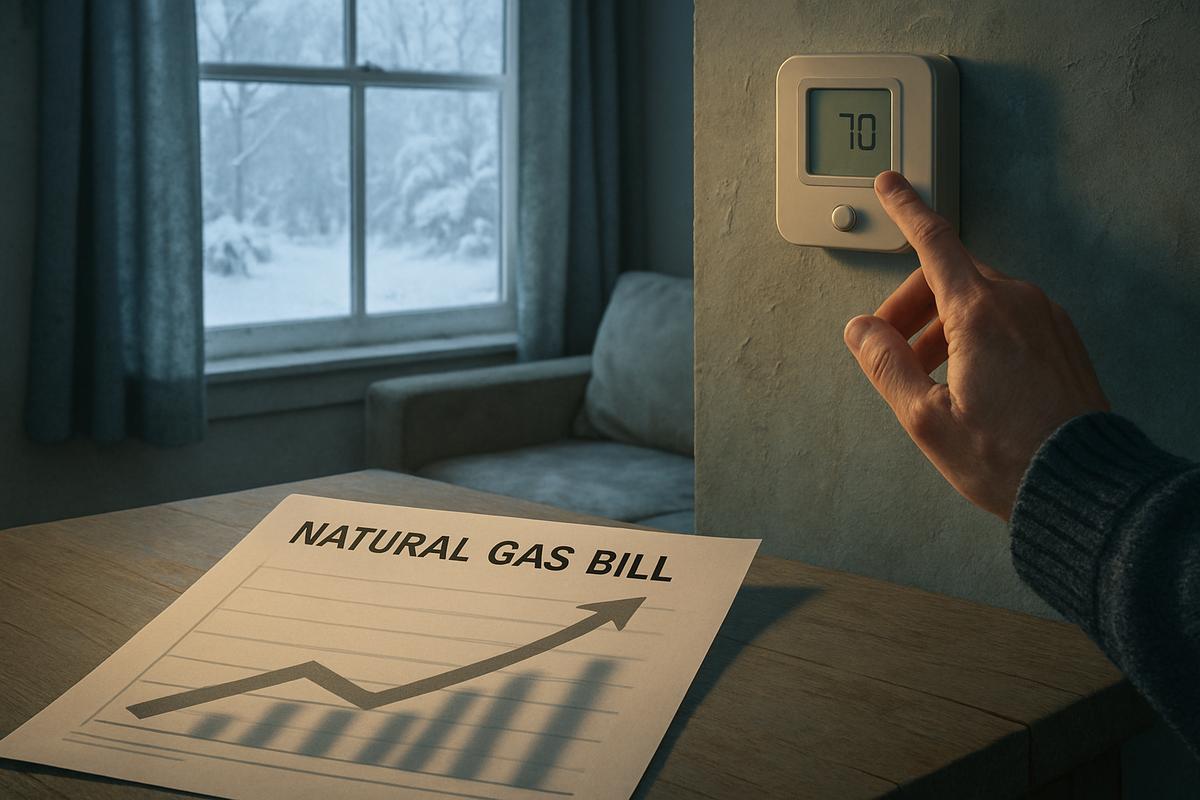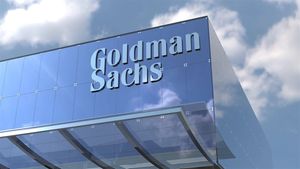
As the chill of the 2025-2026 winter season approaches, natural gas residential customers across the United States are bracing for a significant increase in their heating bills. This anticipated surge, projected to impact household budgets nationwide, stems from a complex interplay of burgeoning global demand for U.S. liquefied natural gas (LNG), evolving domestic supply dynamics, and specific weather forecasts for key heating regions. The financial implications for millions of households could be substantial, adding another layer of economic pressure amidst ongoing inflationary concerns.
The expected rise in heating costs is not an isolated event but rather a symptom of broader shifts in the global energy landscape. While robust domestic natural gas production continues, the insatiable appetite from international markets, particularly Europe, for U.S. LNG exports is tightening the domestic supply-demand balance. This, combined with forecasts of a weak La Niña pattern potentially bringing colder-than-normal temperatures to densely populated regions like the Midwest and Northeast, is setting the stage for a more expensive winter for residential consumers.
The Confluence of Factors Driving Up Heating Costs
The primary driver behind the projected increase in natural gas bills for the upcoming winter (2025-2026) is the relentless growth in demand, heavily influenced by the booming LNG export market. New LNG export capacity is ramping up, with total demand from LNG exports alone expected to provide a substantial incremental call of approximately 3.8 billion cubic feet per day (BCFD) year-over-year, potentially reaching 18-20 BCFD this winter. This robust global demand positions U.S. LNG as a critical balancing factor for international energy security, but it simultaneously exerts upward pressure on domestic prices.
Compounding the demand-side pressures are the anticipated weather patterns. The U.S. winter forecast for 2025-2026 indicates a weak La Niña, which is expected to bring a mix of colder-than-normal and warmer conditions across the country. Crucially, colder outbreaks are specifically forecast for the Midwest and Northeast, regions with high residential heating demand. Some forecasts suggest overall U.S. temperatures will be about 5% colder than the previous winter, amplifying regional price pressures, especially in markets with constrained pipeline infrastructure. The U.S. Energy Information Administration (EIA) anticipates the Henry Hub spot price to increase from around $3.00/MMBtu in September 2025 to $4.10/MMBtu by January 2026, averaging about $3.90/MMBtu in 2026.
Despite record U.S. dry natural gas production, expected to average around 108.5 BCFD (an increase of about 4 BCFD year-over-year, largely driven by associated gas from oil drilling in the Permian region), the supply growth may not fully offset the surge in demand. While natural gas storage levels are generally considered robust, forecast to enter the winter near 3.9 TCF (slightly above the five-year average), tighter supply-demand balances are still expected this winter compared to last. Geopolitical factors, particularly concerning European energy security and the planned phase-out of Russian gas, further underpin strong overseas demand for U.S. LNG, indirectly impacting domestic prices. Beyond the commodity price, local distribution companies (LDCs) like NIPSCO and National Fuel (NYSE: NFG) have also projected increases due to modest delivery and supply rate adjustments, with NIPSCO anticipating a 16% rise and National Fuel projecting a similar increase.
Market Winners and Losers in a Rising Price Environment
The anticipated surge in natural gas prices and heating bills will inevitably create distinct winners and losers across the financial markets and among consumers. On the winning side, natural gas producers are poised to benefit significantly. Companies operating in prolific basins, particularly those extracting associated gas from oil drilling in the Permian Basin, will see increased revenues. Major independent natural gas producers such as EQT Corporation (NYSE: EQT) or Chesapeake Energy Corporation (NASDAQ: CHK) could experience improved financial performance as commodity prices strengthen. Furthermore, LNG export terminal operators, like Cheniere Energy (NYSE: LNG), will continue to thrive from the robust global demand and the expansion of their export capacities, solidifying the U.S.'s position as a leading global gas supplier. Companies involved in pipeline infrastructure that facilitate increased gas volumes to export terminals or demand centers could also see increased utilization and potential tariff benefits.
Conversely, the most immediate and substantial losers will be residential natural gas customers, who will face higher heating bills, straining household budgets already grappling with inflation. This financial burden could disproportionately affect low-income households. While local distribution companies (LDCs), such as CenterPoint Energy (NYSE: CNP) or National Fuel Gas Company (NYSE: NFG), typically pass through commodity costs to consumers, they may face increased challenges related to customer payment defaults and higher bad debt expenses. Public utility commissions may also scrutinize their rate structures more closely. Additionally, industrial users that rely heavily on natural gas as a feedstock or for process heating, especially those without long-term price hedges, could see their operating costs rise, potentially impacting their profitability and competitiveness in the market.
Broader Implications and Historical Context
This expected rise in winter heating bills fits into a broader trend of the United States solidifying its role as a critical global energy supplier, particularly of LNG. The continuous expansion of LNG export capacity underscores the strategic importance of natural gas as a bridge fuel in the global energy transition, even as nations strive for decarbonization. This dynamic highlights the tension between domestic energy affordability and international energy security commitments. The ripple effects could extend beyond individual households, potentially impacting consumer spending in other sectors and contributing to overall inflationary pressures, which central banks are actively trying to manage.
Regulatory and policy implications are also significant. As energy costs rise, there may be increased calls for government intervention, such as expanded energy assistance programs for vulnerable populations or stricter oversight of utility rate-setting processes. Policy debates around accelerating domestic natural gas production versus prioritizing renewable energy development could intensify. Historically, periods of high energy prices, such as during the 2000s or more recently in the aftermath of geopolitical events, have often led to similar public and political pressures for solutions to mitigate consumer impact and enhance energy independence. The current situation draws parallels with past winters where unexpected cold snaps combined with supply constraints led to significant price spikes, reminding stakeholders of the inherent volatility in energy markets.
Navigating the Future: What Comes Next
In the short term, all eyes will be on weather patterns as winter 2025-2026 unfolds. Any prolonged periods of extreme cold in key heating regions could exacerbate demand and push prices even higher. Market participants will closely monitor weekly natural gas storage reports from the EIA, alongside global LNG demand trends and any unforeseen supply disruptions. Natural gas producers will continue to balance capital discipline with the opportunity presented by higher prices, potentially leading to increased drilling activity if price signals remain strong and sustained. Consumers, meanwhile, will be encouraged to explore energy efficiency measures and seek out available energy assistance programs.
Looking further ahead, the trajectory of U.S. natural gas prices and residential heating bills will be shaped by continued investment in LNG export infrastructure, the pace of domestic production growth, and the evolving geopolitical landscape. The debate around energy affordability and security will likely remain at the forefront of policy discussions. Market opportunities may emerge for companies offering energy-saving technologies or alternative heating solutions. However, challenges will persist for low-income households and energy-intensive industries. Potential scenarios range from a moderate increase in bills if winter temperatures are average and supply holds steady, to a more severe surge if a harsh winter combines with unexpected supply disruptions or even stronger global demand.
Wrapping Up: A Winter of Financial Vigilance
The anticipated increase in natural gas residential heating bills for the 2025-2026 winter season represents a significant financial challenge for millions of Americans. The confluence of strong global LNG demand, specific weather forecasts for colder conditions in key regions, and underlying commodity price increases, despite robust domestic production and healthy storage levels, paints a clear picture of tighter market balances. Investors should closely watch weather forecasts, global LNG demand trends, natural gas production reports, and any regulatory actions aimed at mitigating consumer impact.
Moving forward, the energy market will likely remain volatile, influenced by both natural phenomena and geopolitical events. The lasting impact of this winter's energy costs could range from temporary financial strain on households to a renewed impetus for energy efficiency and a re-evaluation of national energy policies. For MarketMinute readers, understanding these dynamics is crucial for navigating investment decisions in a sector poised for continued evolution and potential turbulence.
This content is intended for informational purposes only and is not financial advice





